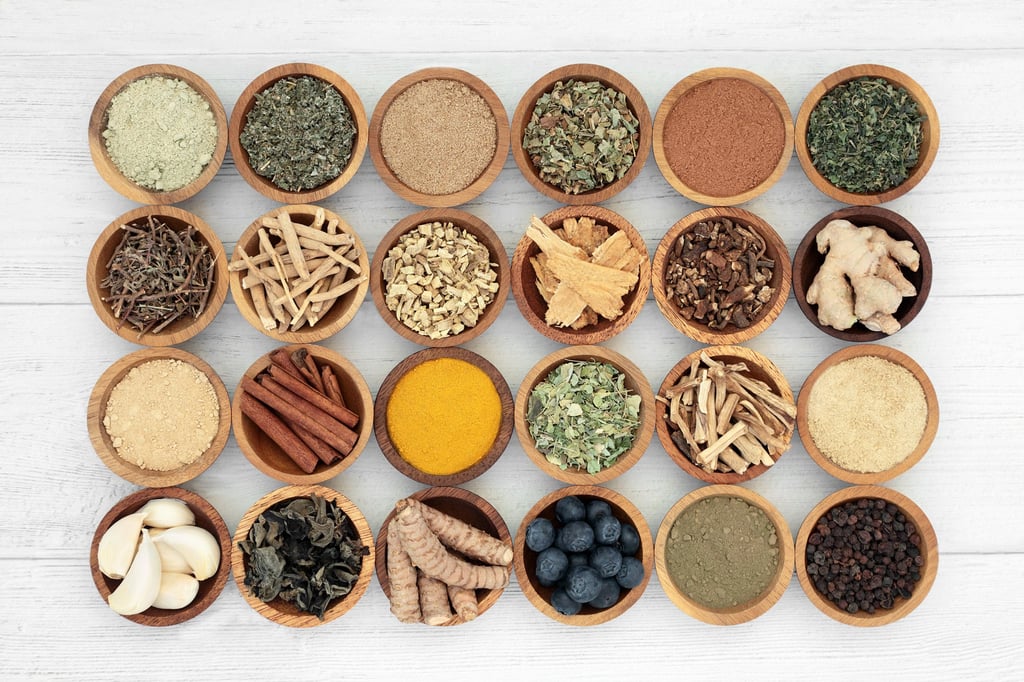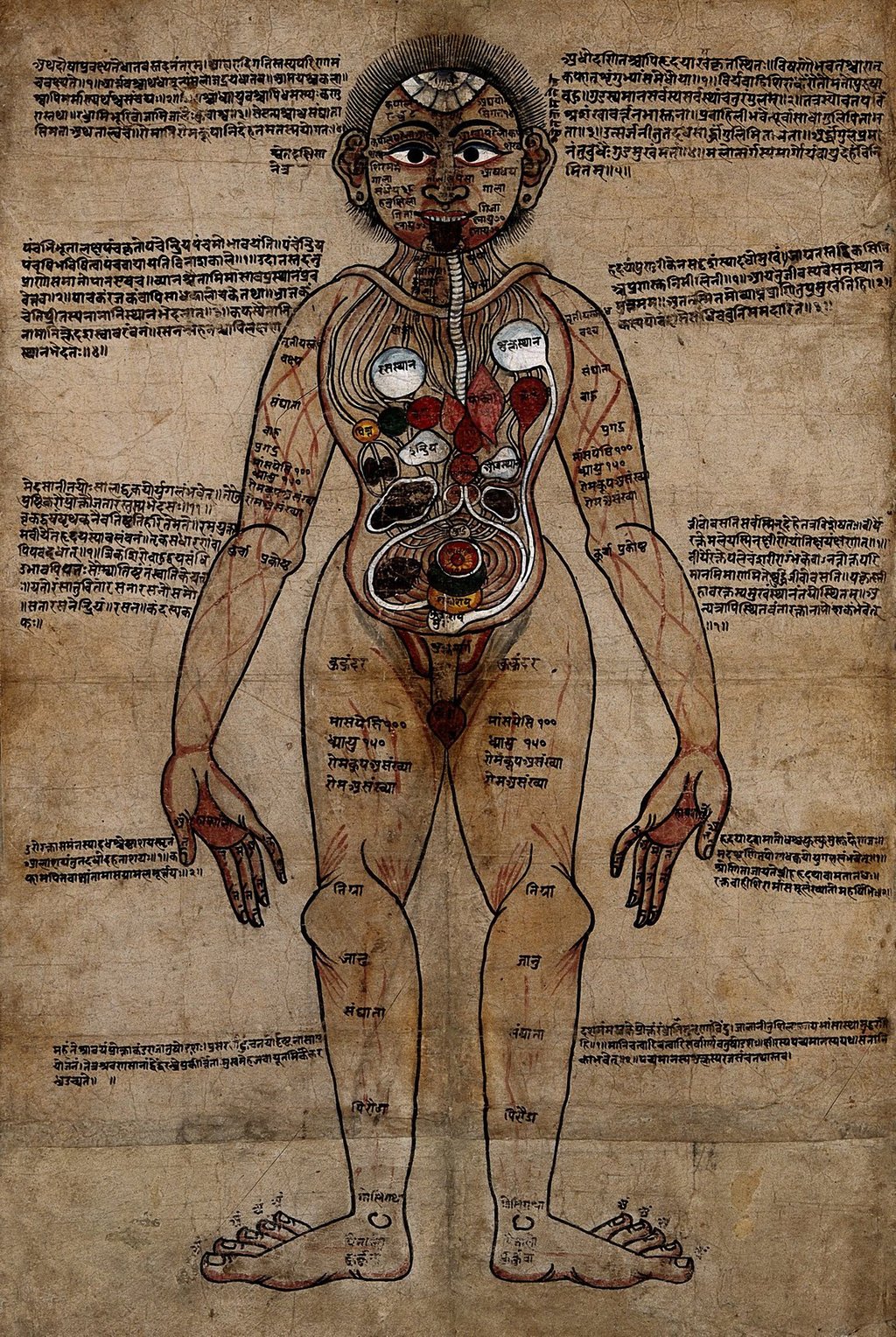
 i_need_contribute
i_need_contribute
Traditional medicine is often the first line of treatment for millions of people around the world.
Ayurveda, or traditional Indian medicine (TIM), and traditional Chinese medicine (TCM) are recognised as two of the oldest comprehensive medical systems.
Both are seeing greater global acceptance, especially as their practitioners undertake more research and adopt a science-based approach to strengthen the evidence base for their practices.
Despite their distinct origins and theoretical frameworks, they share similarities in their philosophies and practices. Their common goal is to promote holistic health and well-being, with a focus on the individual rather than the disease.

Both Ayurveda and TCM rely heavily on botanical sources in their medicinal practices. Many of the herbal remedies used in the two systems are similar. Photo: Shutterstock
Ayurveda’s roots are intertwined with Hindu mythology, its creation attributed to divine intervention. It is believed that Brahma, the god of creation, imparted knowledge to sages, who then passed it down orally for generations before it was documented in the ancient Indian religious texts known as Vedas around 5,000 years ago.
Two main sets of texts form the foundation of Ayurvedic medicine: the Sushruta Samhita, an ancient Sanskrit text on medicine written around 600 BC, and the Charaka Samhita written around 100 BC.
TCM’s origins are grounded in empirical observations and practical experience accumulated by practitioners throughout Chinese history. It has its roots in the Shang dynasty period’s shamanistic era, between 1766BC and 1122BC.
It evolved through human discovery and transmission, with written records dating back at least 2,200 years. The Inner Canon of the Yellow Emperor, from around 300 BC, is considered the cornerstone of TCM, serving as a dialogue between the Yellow Emperor and his physicians.

Ayurvedic medicine is an ancient holistic healing system first developed in India. Photo: Buyenlarge/Getty Images
TCM’s materia medica – a pharmacopoeia of medicinal plants and the medicines that can be obtained from them – has been meticulously documented over centuries, with the number of recorded remedies increasing over time.
The two systems share a holistic approach. Essentially, a practitioner of either first wants to know the patient, not what that patient’s ailment is.
They both aim to restore balance and harmony within the body to promote health and prevent illness, unlike Western medicine which is primarily focused on alleviating symptoms and finding a cure for disease.
Ayurveda and TCM recognise the human body’s interconnectedness with the natural world, and both rely heavily on botanical sources in their medicinal practices. Many of the herbal remedies used in the two systems are similar.
Their underlying frameworks are similar, though different. Ayurveda is based on the concept of the five elements – space, air, fire, water, and earth – which manifest in the body as three doshas or energy forces: vata, pitta, and kapha. These “energies” are present in every individual, but one is usually more dominant than the other two.
An Ayurvedic practitioner can determine a patient’s dosha based on their physical, emotional and mental qualities. If a person has too little or too much of any dosha, their cells will not function efficiently and disease may occur. For optimal health, the doshas must be in balance.
TCM also incorporates five elements – wood, fire, earth, metal and water – that correspond with different seasons, emotions, biological functions, organs, energy directions and meridians, or energy channels in the body.
TCM is based on the premise that the body’s vital energy, known as qi, flows through the meridians, and keeps our physical, mental, emotional and spiritual health in balance.
TCM therapies aim to restore balance in the body between yin (cold, passive) and yang (hot, active), opposing yet complementary forces that maintain balance in the universe and the body. Imbalances are believed to “block” the flow of qi, causing disease.
Both Ayurveda and TCM use techniques that include observing and feeling to understand the size, consistency, texture, location, and tenderness of an organ or body part, and asking questions.
Checking the pulse is particularly important in Ayurveda, and also used in TCM. Examining the tongue for clues to health is used in both also.
A TCM diagnosis also takes account of sounds and smells.
Both systems recognise the importance of cultivating life energy and spiritual well-being.
Ayurveda incorporates yoga, a practice that combines physical postures, breathing techniques, and meditation to promote physical and mental health.
TCM uses qigong, a system of coordinated body postures, movement, breathing, and meditation.
Both practices emphasise the interconnectedness of mind and body and their role in achieving optimal health.
They also share a common goal of achieving health through the free flow of vital energy.
“TIM emphasises prana, which is similar to the concept of qi in TCM,” explains Hong Kong TCM practitioner Samuel To Ching-san, a graduate of the University of Hong Kong’s School of Chinese Medicine with a PhD in acupuncture from Guangzhou University of Chinese Medicine.
Yoga is said to open energy points in the body known as chakras, To explains.
“Blockages in blood circulation can be cleared, allowing the body’s self-healing abilities to restore balance. This aligns closely with TCM principles such as ‘blockage causes pain, and pain indicates blockage’,” as well as “when bones are aligned and tendons are relaxed, qi and blood will flow naturally”.
The two systems share a history of using needle-based therapies.
Ayurveda’s suchi veda therapy involved pricking the body with needles made of various materials at marma points, similar to acupuncture points – or acupoints – in TCM.
In TCM, acupoints are specific locations where qi and blood converge, transfer, and flow in and out. Acupuncture involves inserting needles into these acupoints to regulate the flow of qi.
Both systems have defined energy pathways, nadis in Ayurveda and meridians in TCM, that are similar in function.
While suchi veda was a part of ancient Ayurveda, its consistent practice declined over time. Acupuncture, although disseminated to India in the 6th century, also experienced periods of decline before its resurgence in the mid-20th century.
According to To, the difference in the number of pressure points reflects the decline in the system’s use India.
“Traditional Chinese medicine identifies 361 major acupoints, which is more than the approximately 107 points in Indian medicine.”